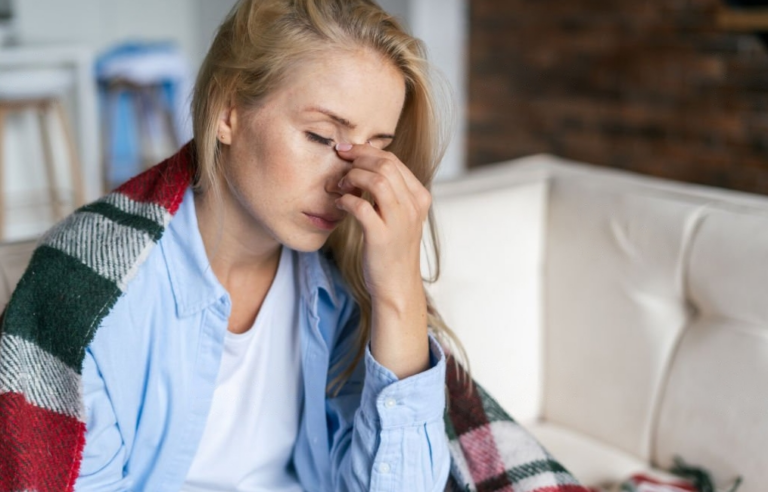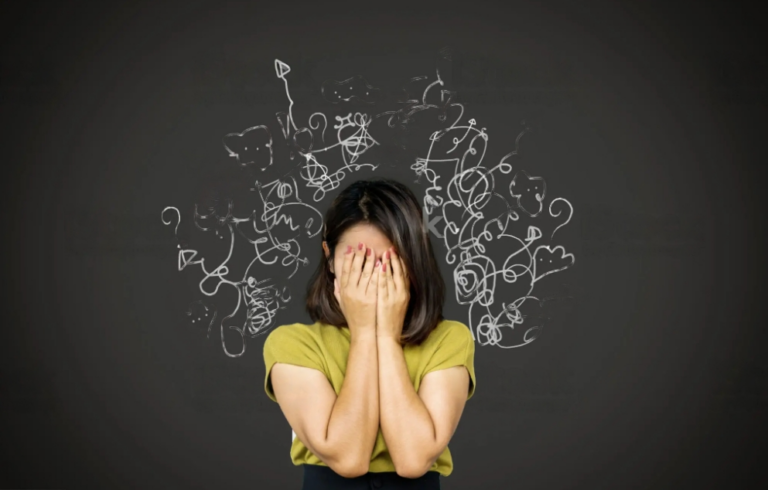Breaking Free: How to Get Rid of Anxiety and Take Control of Your Life
Breaking Free: How to Get Rid of Anxiety and Take Control of Your Life
What is anxiety? : Learning how to relieve anxiety
Anxiety is a natural response when we perceive a threat or feel stressed. Feelings of worry, fear, and unease characterize it. While occasional anxiety is normal, excessive and persistent anxiety can be debilitating and interfere with daily functioning.
Learning how to eliminate anxiety is paramount for individuals struggling with this condition. Chronic anxiety can negatively impact mental health, relationships, work performance, and well-being. Therefore, it is essential to address concerns early on to prevent it from escalating into more severe mental health conditions, such as panic disorders or generalized anxiety disorders.
Additionally, practicing relaxation techniques can be beneficial in calming the mind and body. Techniques such as deep breathing exercises, meditation, and mindfulness can help alleviate anxiety symptoms and promote a sense of calm.
Seeking support from mental health professionals is also essential in managing anxiety. They can provide guidance, therapeutic interventions, and evidence-based treatments tailored to individual needs. For example, talk therapy, such as cognitive-behavioral therapy (CBT), can help individuals challenge negative thought patterns and develop coping strategies to manage anxiety effectively.
Identifying Your Triggers: How to Get Rid of Anxiety by Understanding What Causes It
Anxiety triggers are factors or situations that can activate severe symptoms of anxiety disorders. Understanding these triggers is crucial for individuals dealing with anxiety as it helps them identify what sets explicitly off their symptoms. While triggers can vary from person to person, there are common factors that tend to provoke anxiety.
One of the most prevalent anxiety disorders is generalized anxiety disorder (GAD), which is characterized by excessive worry and persistent fear about various aspects of life. For individuals with GAD, everyday situations and events can trigger anxiety. Additionally, specific triggers can include stressors such as work-related pressures, relationship difficulties, or financial concerns.
Panic attacks, which are intense episodes of fear accompanied by physical symptoms, can also act as triggers for individuals with panic disorder. These attacks can occur unexpectedly or in response to certain situations or thoughts.
How to get rid of anxiety: Examples of anxiety triggers
Feeling anxious is a common experience, but when it escalates into a panic attack, it can significantly impact our daily lives. Anxiety triggers, which can stem from various situations, people, or thoughts, play a crucial role in exacerbating these intense feelings. In this article, we will delve into examples of anxiety triggers, explore how to identify your triggers, and provide coping strategies that can help you navigate through challenging moments and regain control over your well-being.
How to identify your anxiety triggers
Self-reflection and introspection are key to identifying your personal anxiety triggers. Pay attention to your emotional and physical responses during anxiety or even a panic attack. Take note of recurring patterns and any common denominators in your experiences. Journaling can be a valuable tool in uncovering these triggers. Additionally, seeking professional guidance from a therapist can provide you with the necessary support and insights during this process.
Coping Strategies for Dealing with Anxiety Triggers:
When it comes to managing anxiety triggers, natural ways can positively impact your mental and physical health. Consider the following coping strategies:
Prioritize Self-Care: Engage in activities that promote relaxation and self-care, such as practicing mindfulness, indulging in hobbies, and maintaining a balanced lifestyle.
Incorporate Physical Activity: Regular physical activity, such as exercise or yoga, releases endorphins and reduces stress, contributing to a calmer state of mind.
Ensure Sufficient Sleep: Establish a consistent sleep routine and create a relaxing bedtime environment. Quality sleep is vital for overall well-being and can help ease anxiety levels.
Utilize Stress-Relief Techniques: Explore stress-relief techniques such as deep breathing exercises, progressive muscle relaxation, or aromatherapy. These techniques can help alleviate anxiety symptoms.
Seek Support: Reach out to a supportive network of friends, family, or therapists. Sharing feelings and experiences can provide valuable insights, reassurance, and a sense of belonging.
By understanding and addressing anxiety triggers, you can regain control over your daily life and cultivate a healthier mental state. Identifying specific triggers allows you to develop coping strategies tailored to your needs.
Mind Over Matter: How to Get Rid of Anxiety by Changing Your Thoughts
The link between thoughts and anxiety is crucial to understand when exploring anxiety disorders. Anxiety disorder is characterized by excessive worry and persistent unease or fear.
One effective approach to combat anxiety is practicing mindfulness and focusing on the present moment. By being mindful, we observe our thoughts without judgment and cultivate an awareness of our anxious feelings. This enables us to recognize and challenge negative or irrational thoughts, replacing them with more realistic and balanced perspectives.
Furthermore, establishing healthy habits that promote overall well-being can significantly impact anxiety levels. Engaging in regular physical exercise, maintaining a balanced diet, and ensuring a good night’s sleep are essential. Additionally, seeking support from loved ones or a trusted family member can provide valuable encouragement and understanding.
Understanding the link between thoughts and anxiety empowers individuals to manage their anxiety disorder actively. By cultivating mindfulness, challenging anxious thoughts, and seeking support, it is possible to break free from the cycle of excessive worry and lead a more fulfilling and balanced life.
Examples of Negative Thought Patterns that Lead to Anxiety
Negative thought patterns can manifest in various ways, intensifying anxiety. Common examples include:
Catastrophizing: Magnifying potential adverse outcomes and imagining the worst-case scenarios.
Overgeneralization: Drawing sweeping conclusions based on isolated incidents or limited evidence.
Mind Reading: Assuming we know what others are thinking, often assuming the worst.
Personalization: Taking things personally and attributing blame to oneself for events beyond one’s control.
All-or-Nothing Thinking: Viewing situations in black-and-white terms without considering shades of gray or alternative perspectives.
How to Identify and Challenge Negative Thoughts
Identifying and challenging negative thoughts is a pivotal step in managing anxiety. Consider the following techniques:
Thought Awareness: Pay attention to your thoughts, especially when anxiety arises. Recognize negative or worrisome patterns as they occur.
Thought Journaling: Keep a thought journal to record and analyze your thoughts. Identify recurring themes, triggers, and evidence supporting or contradicting your negative thoughts.
Rational Examination: Challenge negative thoughts by examining the evidence and considering alternative perspectives. Ask yourself if your thoughts are based on facts or if they are driven by anxiety.
Cognitive Restructuring: Replace negative thoughts with more realistic and positive ones. Reframe your perspective and focus on constructive solutions rather than dwelling on fears.
How to get rid of anxiety: Coping Strategies for Changing Your Thought Patterns
To foster positive changes in your thought patterns and reduce anxiety, consider implementing these coping strategies:
Mindfulness and Meditation: Practice mindfulness to become more aware of your thoughts without judgment. Meditation can help calm the mind and cultivate a more positive mindset.
Positive Affirmations: Harness the power of affirmative statements to counterbalance any detrimental inner dialogue. Repeat uplifting statements to yourself to instill optimism and self-belief.
Cognitive-Behavioral Therapy (CBT): Consider seeking professional help from a therapist trained in CBT. This therapeutic approach helps identify and modify negative thought patterns effectively.
Self-Care and Stress Reduction: Engage in self-care activities, such as exercise, hobbies, spending time with loved ones, and practicing relaxation techniques. These activities can help reduce overall stress levels and promote a positive mindset.
Thoughts and anxiety are intricately linked, but with awareness and effective coping strategies, you can break free from negative thought patterns and alleviate anxiety. By identifying and challenging negative thoughts, fostering a positive mindset, and incorporating self-care practices, you can cultivate healthier thought patterns and experience greater emotional well-being.
The Power of Relaxation: How to Get Rid of Anxiety by Calming Your Mind and Body
Relaxation techniques can be powerful tools in calming the mind and body, helping to calm anxiety and promote overall well-being. By practicing these techniques, individuals can tap into their body’s natural ability to self-regulate and find a sense of calm amidst anxious feelings.
One effective relaxation technique is deep breathing. Taking slow, deep breaths engages the body’s relaxation response, triggering a decrease in heart rate and blood pressure. By focusing on the breath and intentionally slowing it down, individuals can signal to their body that it is safe and promote a sense of calm.
Progressive muscle relaxation is another technique that can help release tension and reduce anxiety. This practice involves tensing and then releasing different muscle groups, systematically moving from one body part to another. By consciously releasing tension, individuals can promote relaxation throughout their entire body.
By incorporating relaxation techniques into their daily lives and seeking appropriate support, individuals can take proactive steps in managing anxiety and promoting overall well-being.
Examples of Relaxation Techniques
Relaxation techniques are effective tools for managing anxiety and promoting overall well-being. Deep breathing techniques, such as breathing deeply and exhaling slowly, can help regulate your body’s stress response and bring about a sense of tranquility. Meditation cultivates mindfulness and helps you detach from racing thoughts. Yoga combines physical movement with breath control to promote relaxation and flexibility.
How to incorporate relaxation techniques into your daily routine
Creating a daily routine with relaxation techniques is essential for maintaining emotional balance. Find moments throughout your day to pause and engage in these practices. You can allocate dedicated time for meditation or yoga, or simply integrate deep breathing exercises into your regular activities. The key is to be consistent and prioritize self-care.
Coping Strategies for Using Relaxation Techniques during Anxiety
When anxiety strikes, having coping strategies in place can make a significant difference. Here are a few tips:
Recognize the Signs: Be aware of the physical and emotional cues that indicate the onset of anxiety. When you feel anxious, pause and acknowledge the need to take care of yourself.
Breathe Deeply and Mindfully:
- Employ breathing techniques to stop anxiety.
- Adopt a calm approach, taking deliberate, unhurried breaths by inhaling gently through your nostrils and exhaling smoothly through your lips.
- Direct your attention to the tactile experience of your breath as it enters and exits your being.
Create a Relaxing Environment: Find a quiet and comfortable space to practice relaxation techniques without distractions.
Limit Caffeine Intake: Caffeine can exacerbate anxiety symptoms, so consider reducing your consumption or switching to decaffeinated options.
Relaxation techniques are powerful allies in managing anxiety and promoting a state of tranquillity.
Facing Your Fears: How to Get Rid of Anxiety by Confronting What Scares You
Anxiety can be debilitating, evoking feelings of fear and contributing to depression. However, with its anti-anxiety properties, exposure therapy offers hope for those seeking relief. In this article, we will delve into the concept of exposure therapy, exploring its benefits for anxiety treatment. We will discuss how to gradually confront your fears using this therapeutic approach and provide coping strategies to support your journey towards overcoming anxiety.
Explanation of exposure therapy and its benefits for anxiety
Exposure therapy is a proven therapeutic technique that involves gradually exposing oneself to fear-inducing situations or stimuli. By facing fears controlled and systematically, individuals can learn to manage anxiety more effectively. The primary goal is to reduce anxiety and increase resilience. Mental health professionals often recommend this therapy due to its effectiveness in treating anxiety disorders.
How to gradually confront your fears with exposure therapy
Exposure therapy follows a structured approach, allowing individuals to face their fears at a comfortable pace. The process typically involves creating a fear hierarchy, where fears are ranked from least to most distressing. Then, starting with the least feared scenario, individuals are gradually exposed to the feared situations or stimuli, allowing anxiety to subside naturally over time. This systematic approach fosters desensitization and empowers individuals to confront their fears head-on.
Coping Strategies for Using Exposure Therapy to Overcome Anxiety
To support your journey with exposure therapy, consider implementing the following coping strategies:
Practice Deep Breathing: When confronting fears, focus on your breath. Breathe in deeply through your nostrils and exhale gradually through your mouth. This technique promotes relaxation and helps manage anxiety during exposure.
Seek Professional Guidance: Work closely with a trained therapist specializing in exposure therapy. They will provide guidance, support, and ensure a safe environment for your journey.
Utilize Self-Care Techniques: Prioritize self-care activities, such as spending time outdoors, engaging in hobbies, and practicing relaxation exercises. These practices enhance your overall well-being and complement the exposure therapy process.
Stay Consistent and Patient: Overcoming anxiety takes time and effort. Be patient with yourself and maintain consistency in your exposure therapy sessions. Celebrate small victories along the way, as each step forward contributes to your progress.
Exposure therapy holds immense potential in overcoming anxiety and building resilience. By gradually confronting your fears and implementing coping strategies, you can experience a reduction in anxiety levels and regain control over your life.
Seeking Professional Help: How to Get Rid of Anxiety by Working with a Healthcare Professional
When you feel anxious and in need of support, various healthcare professionals can assist you in managing your anxiety. These professionals are knowledgeable and experienced in addressing mental health concerns and can provide valuable guidance and treatment options.
One type of healthcare professional who can help with anxiety is a therapist. Therapists, such as psychologists or licensed counsellors, provide talk therapy to help individuals explore their feelings, thoughts, and behaviours associated with anxiety. Through evidence-based techniques, therapists can help you develop coping strategies and work towards reducing anxiety symptoms.
Psychiatrists are specialized medical professionals who focus on mental well-being. They can assess your anxiety and prescribe medication if needed. Medication can be a valuable tool in managing anxiety, particularly in cases where symptoms are severe or significantly impacting daily functioning. It’s important to note that a healthcare professional should prescribe and monitor medication.
Remember, seeking professional help for anxiety is a brave and vital step towards better mental health. With the guidance and support of healthcare professionals and your commitment to self-care, you can work towards managing anxiety and improving your overall well-being.
Ready to overcome anxiety and start living your best life? Connect with Coach Dave Lee today and discover how his expert guidance can help you achieve lasting peace of mind. Schedule your free consultation now, click here.
Conclusion
In conclusion, learning how to relieve anxiety is essential for maintaining mental well-being and overall quality of life. Anxiety, characterized by feelings of worry and fear, can have a debilitating impact on individuals if left unaddressed. By implementing these strategies, seeking professional help, and prioritizing self-care, individuals can effectively relieve anxiety and lead a more balanced and fulfilling life. Remember, managing anxiety is a journey that requires patience, consistency, and support, but it is within reach for anyone willing to take the necessary steps.
FAQs
- How to get rid of anxiety without medication?
Relaxation techniques, exercise, therapy, support, and self-care help.
- Can anxiety go away forever?
Anxiety can decrease significantly but may not vanish entirely.
- Who do you talk to about anxiety?
Reach out to therapists, counsellors, friends, or support groups if you feel anxious
- How to distract yourself from anxiety?
Engage in hobbies, read, listen, watch, practice mindfulness, or walk.
- How to live in the moment with anxiety?
Practice mindfulness, breathe deeply, and ground yourself.
References
Better Health Channel. (2012). Managing and treating anxiety. Vic.gov.au. https://www.betterhealth.vic.gov.au/health/conditionsandtreatments/anxiety-treatment-options
Centers for Disease Control and Prevention. (2018, April 23). Mental health conditions: Depression and anxiety. Centers for Disease Control and Prevention. https://www.cdc.gov/tobacco/campaign/tips/diseases/depression-anxiety.html
McDermott, A. (2021, December 15). Natural Remedies for Anxiety: 10 Ideas. Healthline. https://www.healthline.com/health/natural-ways-to-reduce-anxiety#natural-remedies
Marie, S. (2021, June 23). Reduce Anxiety Now: How to Calm Down Quickly. Psych Central. https://psychcentral.com/anxiety/how-to-reduce-anxiety-quickly
Delagran, L. (n.d.). How to Deal with Fear and Anxiety. Taking Charge of Your Health & Wellbeing. https://www.takingcharge.csh.umn.edu/how-deal-fear-and-anxiety
how to get rid of anxiety how to stop anxiety thoughts ways to calm anxiety attack how to reduce anxiety naturally natural way to relieve anxiety fast foods that reduce anxiety fast how to get rid of anxiety how to get rid of anxiety






